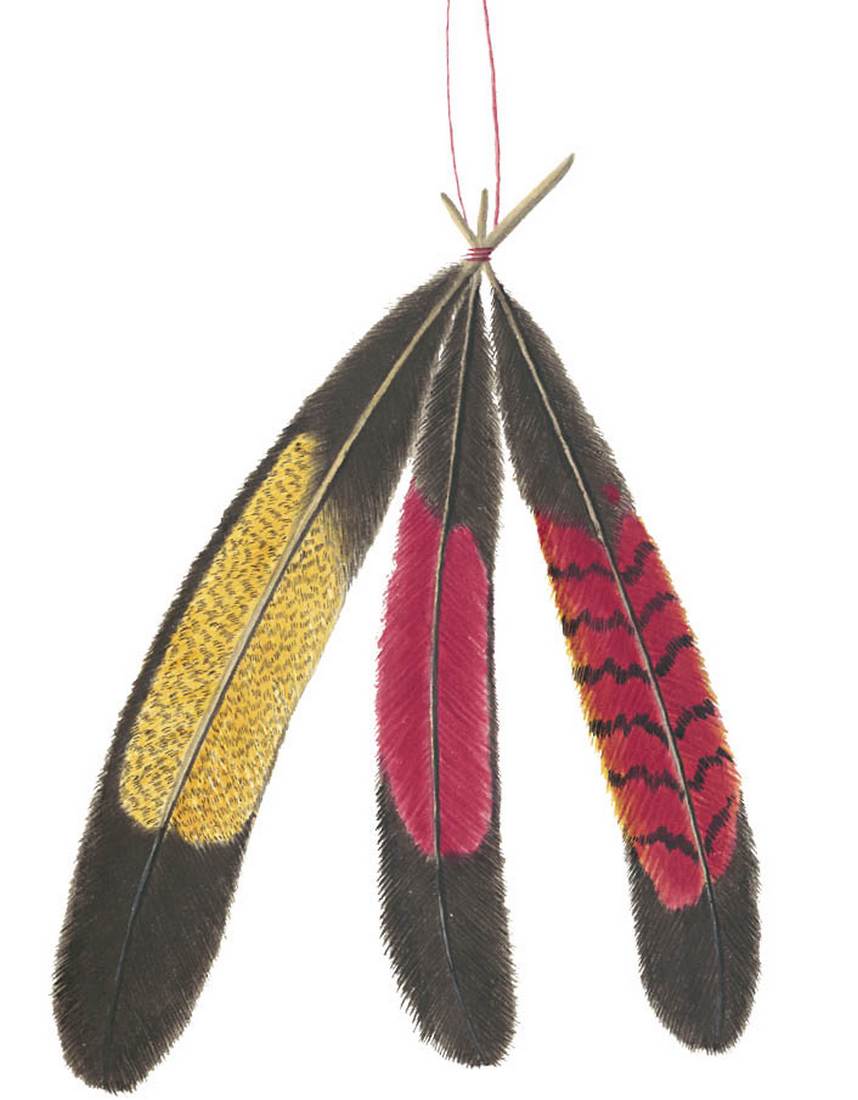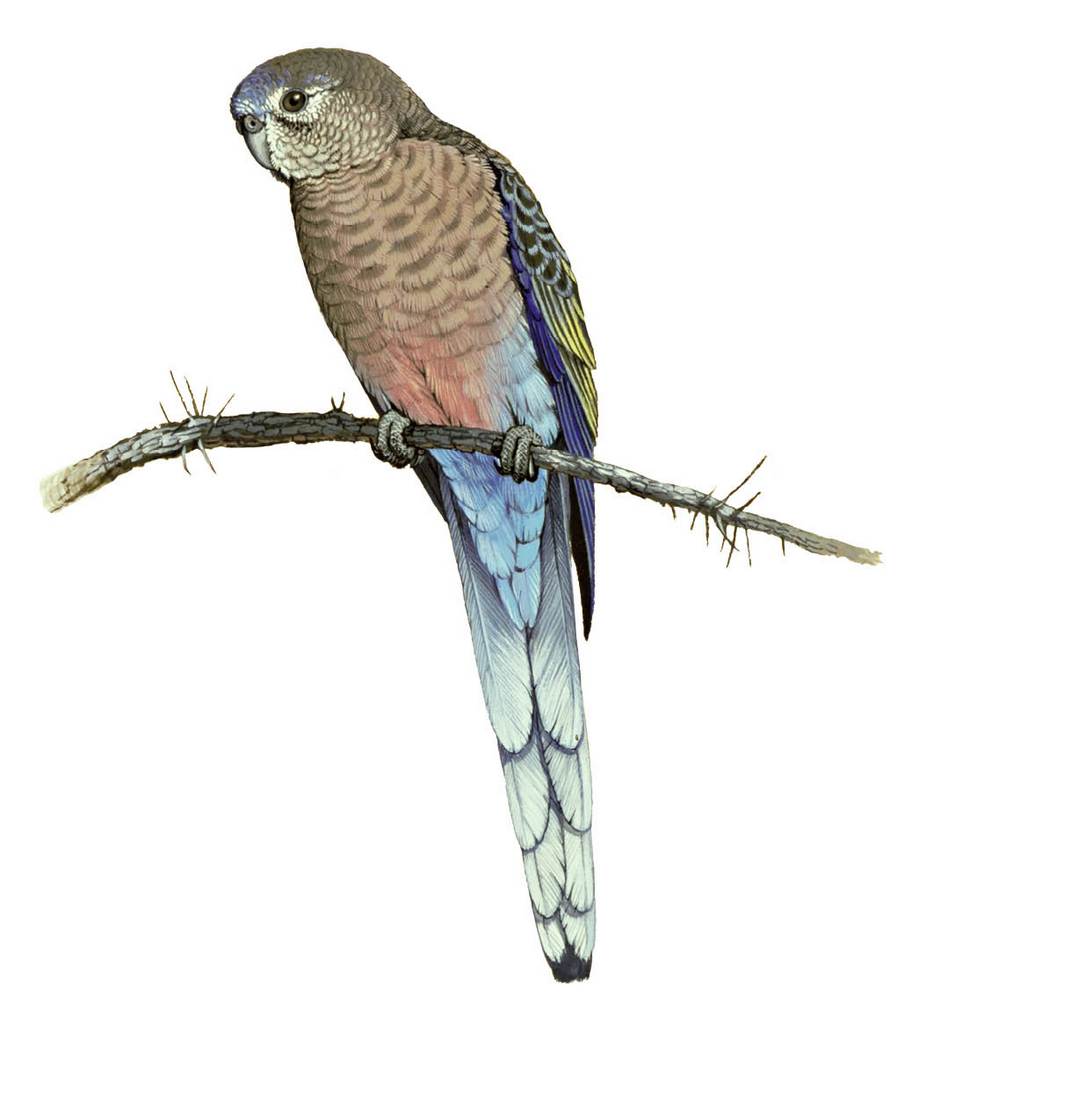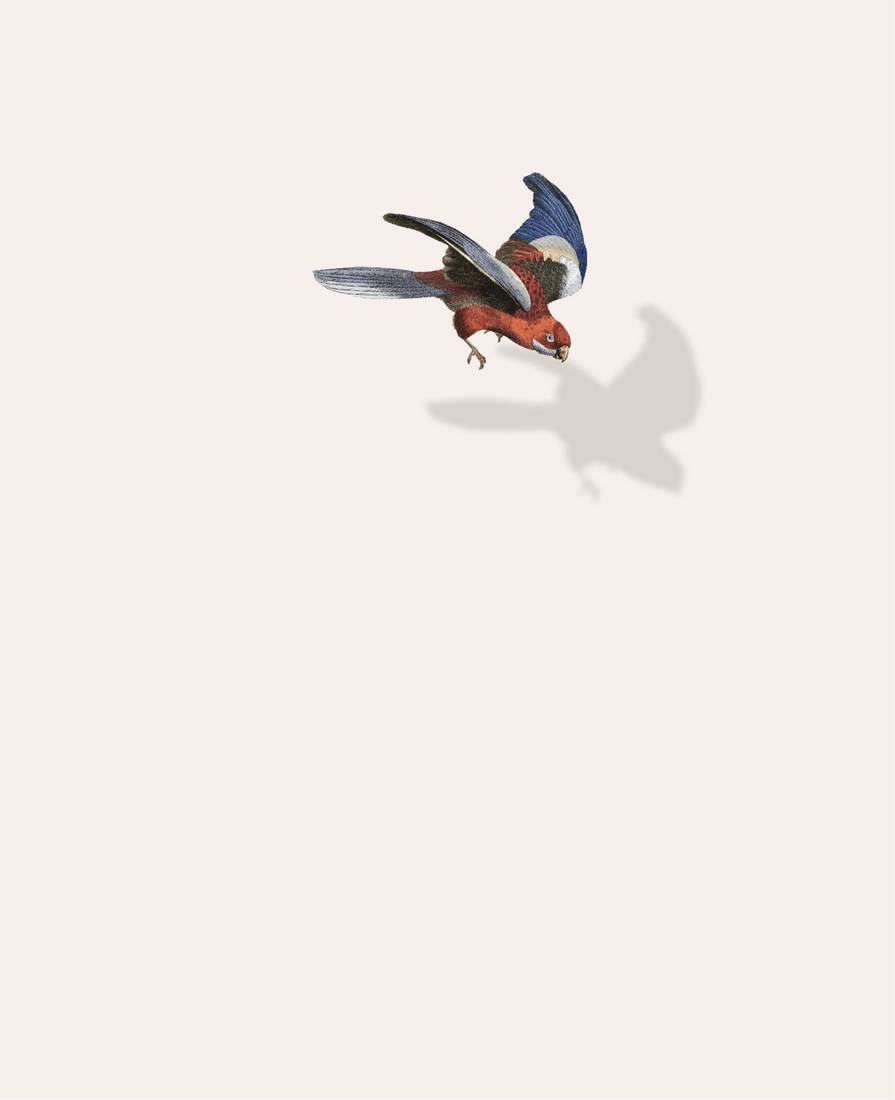
John Hunter, Feathers of the Black Cockatoo’s Tail
between 1788 and 1790

John Hunter, Feathers of the Black Cockatoo’s Tail
between 1788 and 1790
Foreword
Even before European artists paid attention to Australian parrots from the time of Captain Cook’s exploration of the east coast of the continent, people’s association with these wonderful birds had been longstanding. It is probable that the Rose-ringed Parakeet, Psittacula krameri, from northern Africa, was known to the ancient Egyptians, though there appears to be no records in their writings or art. Ctesias, a Grecian slave who became court physician to Artaxerxes II in 401 BCE, gave a fairly accurate description of a Plum-headed Parakeet, Psittacula cyanocephala, and wrote romantically of the bird’s ability to speak the language of its native India and of the claim that it could be taught to speak Greek. It was probably Alexander the Great who introduced to Europe tame parrots from the Far East, and who is honoured in the name of the Alexandrine Parakeet, Psittacula eupatria. Aristotle almost certainly based his descriptions of parrots on birds brought back by the triumphant armies of Alexander,his pupil. The African Grey Parrot, Psittacus erithacus, and other parrots from Africa and the Indian subcontinent were well known to the ancient Romans, and talking parrots were status symbols among the noble classes.
A connection between indigenous peoples and parrots undoubtedly extends even further back in time. Indian tribes throughout the Amazon River Basin have traditionally used parrot feathers, especially the long tail-feathers of macaws, for ceremonial purposes, and they have always kept parrots as pets. Macaw tail-feathers have been found during archaeological investigations at Apache sites in south-western USA, suggesting that they were items of trade with Central American tribes, possibly in exchange for salt. In our own region, parrot feathers, especially those of the Sulphur-crested Cockatoo, Cacatua galerita, and Pesquet’s Parrot, Psittrichas fulgidus, are used in Papua New Guinea for ceremonial headdresses. In Australia, Aboriginal people attached tail-feathers from the Red-tailed Black Cockatoo, Calyptorhynchus banksii, to weapons, and in his book, Among Cannibals, published in 1889, Carl Lumholtz recorded that crest feathers from cockatoos, probably Sulphur-crested Cockatoos, were used as ceremonial head adornments in northern Queensland. In northern Australia today, colourful parrot feathers are still incorporated into sacred string and used to decorate ceremonial baskets.
Voyages of discovery to Asia and the Americas in the fifteenth and sixteenth centuries resulted in new species of parrots being taken back to Europe, and this in turn generated a strong upsurge in the popularity of parrots as cagebirds. It is not surprising that this popularity was reflected in art, with a parrot on a stand or in a cage often being depicted in commissioned family portraits, presumably to signify the high social standing of the family. Parrots were associated with exotic, tropical lands and became romantically linked with seafarers, especially with pirates. We all remember the pet parrot sitting on the shoulder of Long John Silver as portrayed in illustrated volumes or in film versions of Robert Louis Stephenson’s Treasure Island. Obviously there would have been intense interest from traders involved in the spice trade to South-East Asia when told of a great land to the south where large flocks of parrots occurred—a Land of Parrots!
These hearsay reports of a ‘Land of Parrots’ were confirmed with the European discovery and subsequent exploration of Australia, and the worldwide popularity of Australian parrots has persisted since then. At this time of discovery, the study of birds took on a new scientific approach, due mostly to the formulation of the binomial system of nomenclature by the Swedish botanist, Carl Linnaeus, and ornithologists were particularly interested in diversity among birds. Hitherto, parrots had been considered to be a strongly homogeneous group of birds and nearly all known species were included in the genus Psittacus established by Linnaeus. A rich variety of parrots in Australia strengthened an emerging reassessment of relationships among the birds, and the naming of new species, together with a reclassification of known species, featured prominently in ornithological works. Because classification was based primarily on morphological features, illustrations became increasingly important. New processes for reproduction of artwork, especially lithography, facilitated the production of profusely illustrated publications. In Flocks of Colour, Penny Olsen has presented an excellent overview of these early publications and chosen a fine selection of early illustrations of Australian parrots.
What is it about parrots that maintains our fascination with them and continues to make them a favourite group of birds for artists? In this country, where parrots are such a prominent component of the avifauna, paintings of the more familiar and more colourful species are reproduced in books, on greeting cards and calendars, and even on the lids of biscuit tins. The vivid plumage of most species certainly makes them appealing, and their highly developed learning capabilities, which we interpret as ‘intelligence’, add to that appeal. As pets, they bond affectionately with their owners, and being able to mimic human speech intrigues us, just as it did so many centuries ago.
Two Australian species—the Budgerigar, Melopsittacus undulatus, and the Cockatiel, Nymphicus hollandicus—have become domesticated pets throughout the world. I recall that, while waiting at a bus stop on the corner of Lexington Avenue and 79th Street in bustling midtown Manhattan, New York City, I heard echoing from an apartment balcony the same chirruping call that was familiar to me from encounters with Cockatiels during travels through the open spaces of inland Australia.
I also remember attending an international conference on the conservation of parrots and hearing one speaker suggest that ‘we have loved parrots to death’. He was referring to the impact on wild populations of trapping and nest robbing for the live-bird trade, fuelled by the strong demand for parrots as cagebirds or pets. Although trapping is seldom a threat to a species, it takes on increased significance when a species is already affected adversely by a primary pressure such as loss of habitat. This combination of pressures has been particularly evident in the Indonesian Archipelago, where cockatoos and some lorikeets have become critically endangered. I know of no Australian species currently at risk from trapping, but chopping into nesting hollows to illegally remove eggs or chicks continues to threaten local populations of some Calyptorhynchus black-cockatoos and the Major Mitchell’s Cockatoo, Lophocroa leadbeateri. I have no doubt that the taking of many nestlings of the Golden-shouldered Parrot, Psephotus chrysopterygius, contributed significantly to the dramatic decline of that species during the 1960s and 1970s.

William T. Cooper, Bourke’s Parrot (Neophema bourkii) 1970 (adult male)
I have heard it said that humans have a love/hate relationship with parrots, manifested primarily in the popularity of parrots as cagebirds and their infamy as ‘pests’ because of conflicts with agriculture. In Australia, damage to crops by parrots is not economically significant at the national level, for yields are increasing and there is a build-up of surplus grain stocks, but damage at a local level can be significant and there is a real need to protect crops. It is unlikely that crop damage can be eliminated, but modified farming practices based on sound ecological principles can reduce the level of damage. Too often I hear of crops highly attractive to parrots being planted near tree-lined watercourses, a preferred habitat for many parrots, making high damage levels inevitable. Where severe damage is likely, the substitution of unattractive crops, such as canola or soybeans, becomes a viable option. Crop-growers must consider the likelihood of damage by birds when planning their enterprises, and they should formulate remedial measures as an integral component of management practices.
Parrots are now one of the most seriously threatened groups of birds, so in this country we have added responsibility to safeguard our populations. Some generalist species, such as the Galah, Eolophus roseicapillus, the Sulphur-crested Cockatoo, Cacatua galerita, and the Platycercus rosellas are doing well, and have adapted successfully to artificial habitats, but a number of specialist species, including the Golden-shouldered Parrot, Psephotus chrysopterygius, the Orange-bellied Parrot, Neophema chrystogaster, the Ground Parrot, Pezoporus wallicus, and the Night Parrot, Pezoporus occidentalis, are struggling to survive.
Flocks of Colour allowed me to compare the depiction of species made at different times, and it became evident that, with increasing knowledge of the birds and their habits, artists were able to create more lifelike images. It was especially pleasing for me to have some of the fine paintings by William Cooper included. Bill knows the birds, which is reflected in the meticulous attention to detail that is a hallmark of his work. I have enjoyed a rewarding partnership with Bill on a number of projects during more than 40 years, and it is particularly satisfying to both of us that original paintings for our first book, Parrots of the World (Lansdowne Editions 1973, 1978, 1989), are held in the National Library of Australia. Some of these paintings are reproduced in this book.
I know of no other book that treats the illustration of Australian parrots in an historical context, so enabling readers to make comparisons between very early and present-day portraits of each species. I congratulate Penny Olsen and staff at the National Library of Australia for bringing together, in a striking format, this historical documentation of Australian parrots in natural history artworks.
Joseph M. Forshaw

Édouard Traviès
La Perruche de Pennant, Nelle. Hollande 1860s